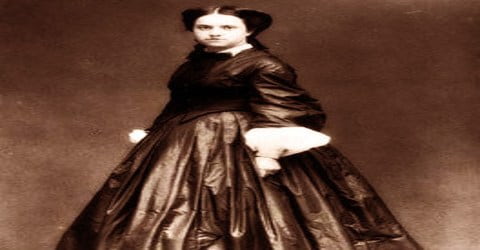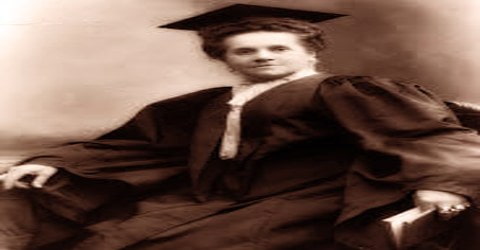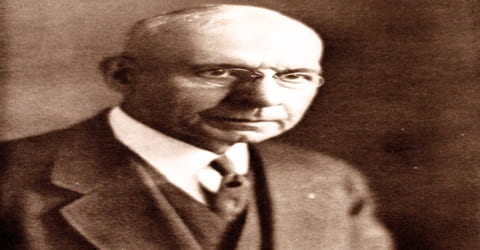Biography of Emily Warren Roebling
Emily Warren Roebling – American socialite, builder, and businesswoman.
Name: Emily Warren Roebling
Date of Birth: 23 September 1843
Place of Birth: Cold Spring, New York, United States
Date of Death: 28 February 1903 (aged 59)
Place of Death: Trenton, New Jersey, United States
Occupation: Engineer
Father: Sylvanus Warren
Mother: Phebe
Spouse/Ex: Washington Roebling (m. 1865)
Children: 1
Early Life

An American socialite, builder, and businesswoman, who is known for her contribution to the completion of the Brooklyn Bridge after her husband Washington Roebling developed caisson disease (a.k.a. decompression disease), Emily Warren Roebling was born on 23rd September 1843, in Cold Spring, New York, U.S. Her husband was a civil engineer and the chief engineer during the construction of the Brooklyn Bridge; he had taken charge of the project after the death of the bridge’s principal designer, his father, John Augustus Roebling.
In order to help her husband in his work, Emily extensively studied civil engineering topics like the strength of materials, stress analysis, and cable construction. She had some prior interest and knowledge about bridge construction even before her husband’s appointment as Chief Engineer. Her knowledge about the subject came in handy when her husband became ill with caisson disease. As the disease progressed, he became increasingly disabled, forcing Emily to fulfill most of his engineering duties in the construction of the bridge. Along with her husband, she jointly planned the bridge’s continued construction, and actively managed the day-to-day construction activities. Over the course of the work, she engaged with politicians, engineers, and others associated with the bridge and was recognized as the engineer largely responsible for guiding the construction of the Brooklyn Bridge. For years Emily remained busy in overseeing the work on the bridge and served as an effective spokesperson on behalf of her husband.
Childhood, Family and Educational Life
On 23rd September 1843, Emily Warren Roebling was born, to Sylvanus and Phebe Warren at Cold Spring, New York, U.S. as the second youngest of the couple’s 12 children. Her father was a state assemblyman and town supervisor. She was especially close to her older brother Gouverneur K. Warren.
Emily attended school at the Georgetown Visitation Academy in Washington DC. Intelligent and curious from a young age, she loved to learn and wanted to pursue formal education.
Personal Life
In 1864, during the American Civil War, Emily visited her brother, who was commanding the Fifth Army Corps (a.k.a. V Corps), at his headquarters. There she met Washington Roebling who worked on her brother’s staff. The two fell in love.
Emily Warren Roebling got married to Washington Roebling in a dual wedding ceremony (alongside another Warren sibling) in Cold Spring on 18th January 1865. One child, John Augustus Roebling II (1867-1932), was born of their union.
Emily was a wide traveler and lived an active life until the very end.
Career and Works

Emily Warren Roebling’s father-in-law John Augustus Roebling, a prominent civil engineer, designed the Brooklyn Bridge. As he began work on it, Emily and her engineer husband went to Europe to study the use of caissons for the bridge. Meanwhile, her father-in-law sustained a crush injury to his foot in a freak accident when a ferry pinned it against a piling. The amputation of his crushed toes resulted in a tetanus infection due to which his health deteriorated quickly. Realizing that he would not survive, he appointed Washington Roebling in charge of the project.
Emily Warren accompanied her husband to Europe in 1867-68, where he went on his father’s orders to study the latest techniques of constructing foundations underwater by using sealed and pressurized caissons. Following the death of John Augustus from a freak accident in 1869, Washington assumed direction of the Brooklyn Bridge project, the longest-span suspension bridge in the world at that time and the first to be built with steel cables. As a result of prolonged exposure to pressurized conditions in the caissons at the bottom of the East River, Washington suffered severe attacks of decompression sickness, which was known at the time as “caisson disease”.
Emily Warren took up the responsibility of fitting her husband’s shoes by working on the bridge. She was intelligent as she had known about the construction of bridges. She later read a lot on the topic of constructions of bridges to understand all the engineering behind it. He gained knowledge of cable constructions, the strength of minerals and stress analysis. She took up most of the duties of a chief engineer.
Emily actively became involved in the construction of the bridge, supervised the day-to-day operations and planned the bridge’s continued construction jointly with her husband. The responsibility of dealing with politicians and others associated with the bridge also fell upon her.
Washington’s title of the chief engineer was in jeopardy because of his sickness, in 1882. In order to allow him to retain his title, Emily went to gatherings of engineers and politicians to defend her husband. To the Roeblings’ relief, the politicians responded well to Emily’s speeches, and Washington was permitted to remain chief engineer of the Brooklyn Bridge.
Emily Warren became the first woman to formally address the American Society of Civil Engineers as she had now become the spokesperson on behalf of her husband, in 1882. The Society questioned the ability of Washington to finish the bridge, but with the help of his wife, he was retained as chief engineer until the completion of the Brooklyn Bridge in 1883.
In May 1883, just before the grand opening of the bridge, Emily rode the first carriage across from the Brooklyn side, carrying a rooster as a symbol of victory. In a stirring dedication speech on opening day, the philanthropist, political reformer, and rival steelmaker Abram S. Hewitt declared that the new bridge would “ever be coupled” with the thought of Emily Warren Roebling. Emily then supervised the construction of a new family mansion in Trenton, where her husband returned to the family business and pursued other interests as his health permitted.
Upon completion of her work on the Brooklyn Bridge, Emily Warren invested her time in several women’s causes including Committee on Statistics of the New Jersey Board of Lady Managers for the World’s Columbian Exposition, Committee of Sorosis, Daughters of the American Revolution, George Washington Memorial Association, and Evelyn College. This occurred when the Roebling family moved to Trenton, New Jersey. Emily also participated in social organizations such as the Relief Society during the Spanish-American War. She traveled widely in 1896 she was presented to Queen Victoria, and she was in Russia for the coronation of Tsar Nicholas II.
Emily Warren also served on the Board of Lady Managers for New Jersey at the World’s Columbian Exposition. A learner till the very end, she received a certificate in business law from the Woman’s Law Class at New York University in 1899. In addition, she traveled and lectured widely until her death.
Death and Legacy
Emily Warren Roebling died on 28th February 1903 at the age of sixty. She loved traveling a lot, and she did not stop learning new things until her death.
Emily is known for her contribution towards the construction of the Brooklyn Bridge which connects the boroughs of Manhattan and Brooklyn by spanning the East River. Considered an icon of New York City, the bridge was designated a National Historic Civil Engineering Landmark in 1972.
Today the Brooklyn Bridge is marked with a plaque dedicated to the memory of Emily, her husband Washington Roebling, and her father-in-law John A. Roebling. The New York Times published a belated obituary for Emily, in 2018.
Information Source:
















